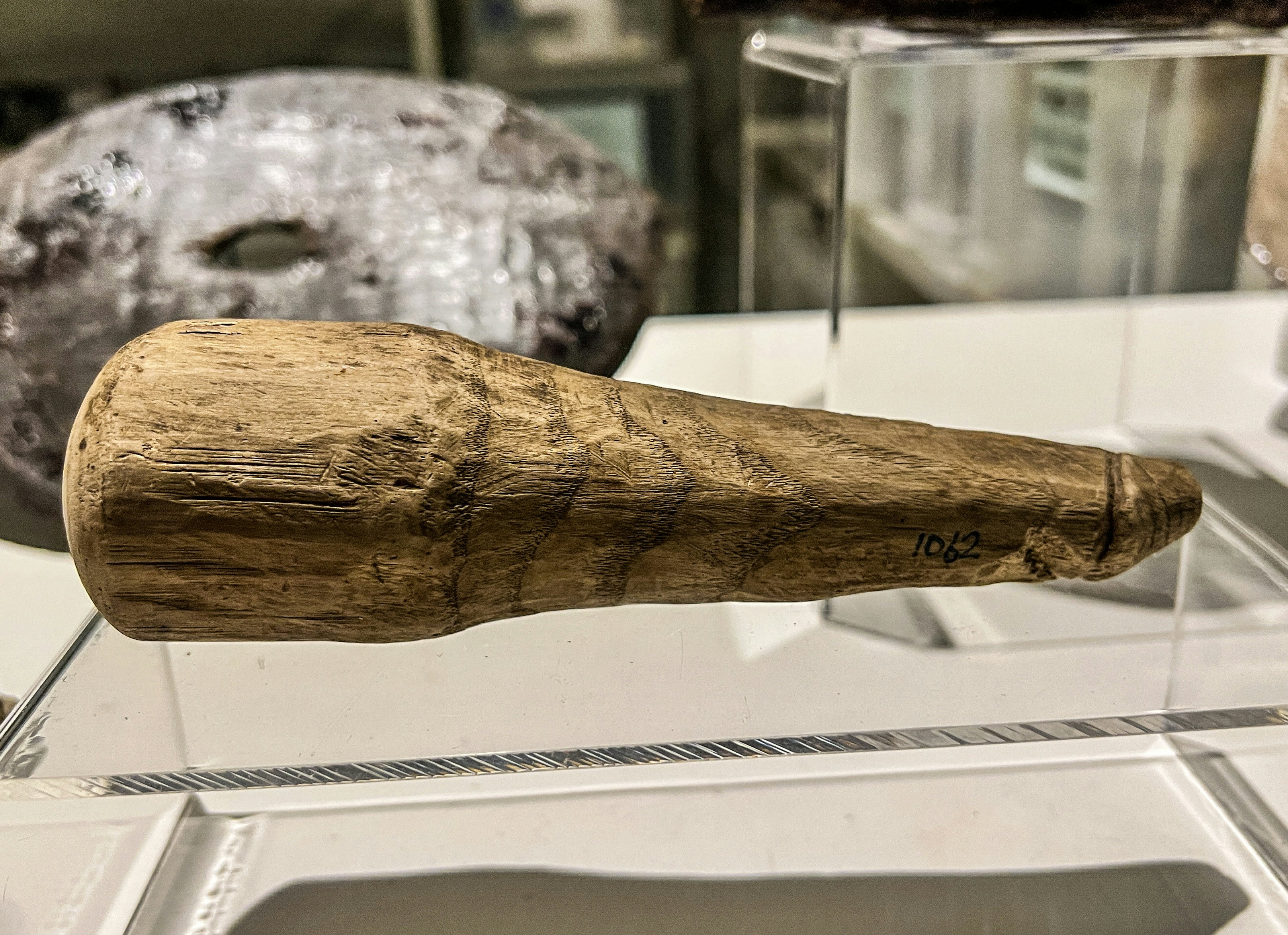
Four-leaf clovers, rabbit’s feet, the number seven — there are many symbols we believe to bring good luck. Chances are, penises are not on your list of lucky objects. But they were for the ancient Romans.
Phallic amulets, jewelry, paintings, and accessories were a common commodity during the Roman empire. Researchers believe that they were magical symbols of power, used to ward off bad spirits and bring good fortune.
But one phallic Roman object — a wooden, disembodied penis about 6.3 inches long — may have provided a little more than good luck, archaeologists say. In a study published this week in the journal Antiquity, they investigate if the object was a tool, decoration, or possibly a 1,900-year-old dildo.
Phallus, revisited
Originally discovered in 1992, the conspicuous hunk of wood was previously thought to be a darning tool. It would have been used by Romans at the fort of Vindolanda in northern Britain. But due to its unique shape and material, the authors of the new study decided to re-analyze it.

Phallic trinkets unearthed from the Roman world are not typically made of wood, but rather bones, stones, metal, and ceramic.
“Wooden objects would have been commonplace in the ancient world, but only survive in very particular conditions — in northern Europe normally in dark, damp, and oxygen-free deposits,” said archaeologist and study author Rob Sands of University College Dublin in a press release. “So, the Vindolanda phallus is an extremely rare survival.”
And it’s especially rare to find a wooden, penis-shaped object that’s disconnected from a body. As it stands, the object from Vindolanda is the only one of its kind recovered from Roman times — sparking questions about its intended use.
Touching wood
Carved out of wood from an ash tree, the phallic object is smooth and simple in shape.
“Little technical proficiency was required, but an economy of line creates the intended visual outcome,” the researchers write. In other words, it definitely looks like a penis.

To figure out how the cylindrical hunk of wood may have been used, researchers looked for spots along the object that seemed worn down, or smoother than other parts. Most of the wear and tear appeared to be at both ends of the phallus, indicating that whoever used it would have regularly touched the tip and base more than the middle.
So, how was it used? The answer isn’t clear, partially because it’s different from a lot of phallic trinkets in the archaeological record. But the researchers detail three hypotheses in the report — including, yes, that the object may have been used for sex.
Herm, pestle, dildo
The first idea is that the phallus was once attached to a sculpture called a herm. Herms featured carved heads on a large stone block with genitals placed beneath them, and were common in Greek and Roman times.
Also possible is that the phallus was once slotted into an entryway of a building at Vindolanda for passersby to touch for good luck.
But it doesn’t have the kind of wear on its base that other ancient penis-shaped, detachable decorations have. There’s no clear indication that it would have fit into a socket – dampening the idea that it was simply decorative.

So instead, maybe it was a pestle for crushing up materials, the researchers suggest.
“The uniform convex and smooth basal surface may have resulted from grinding, or mixing, materials, while the greater wear on the other end of the phallus may indicate where it was held during the process,” the authors write.
There’s no residue or staining left on the surface of the object — though that may have been due to how the wood was preserved, researchers write.
Finally, they explore the idea that the phallus may have been used as an object for sex, though not necessarily in the same way as today’s sex toys.
Pleasure or pain?
Combined with the size, smoothness, and shape of the phallus, the wear patterns do indicate that both ends were probably touched a lot, just like a modern-day dildo.
“We know that the ancient Romans and Greeks used sexual implements — this object from Vindolanda could be an example of one,” said archaeologist and study author Rob Collins of Newcastle University in a press release.
However, the researchers caution that it may not have been a sex toy at all, as there’s no guarantee that it was used for pleasure. Sexual violence was prominent in Roman literature, and this tool could have been possibly used to harm others.
“Such implements may have been used in acts that perpetuated power imbalances, such as between an enslaved person and his or her owner,” the researchers write.
They also note that it isn’t clear if the object was used in penetrative sex. There’s a possibility it could have been used for clitoral stimulation instead, given that there isn’t much wear on the shaft.
Lubricants and human secretions are unlikely to have survived on its surface, so there’s no confirmation of who used it, and how. But given the object’s conspicuous nature, it’s safe to say that it could have been used for exactly what it looks like.







